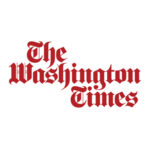|
Getting your Trinity Audio player ready...
|
Part 3 | Alarms on Lebanese-Israeli Border: Preemptive Actions to Prevent a Wide-Scale War in The Middle East
In Part 1 of my three-part analysis, “Alarms on the Lebanese – Israel Border might be Last Wake-up Call for Western Leaders” (September 11, 2019), I explained and contextualized the events of September 1, 2019, on the Israeli Lebanese border.
In Part 2, “Alarms on the Lebanese – Israeli Border (Part 2) Iran’s Hegemonic Modus Operandi” (September 13, 2019) I described the Iranians vision of creating a “The Shi’ite Crescent” to become the regional superpower, their strategy, and accomplishments towards that end. And why they must be prevented from achieving that goal.
The ink of my previous two articles hadn’t even dried when on September 14th, Iran directly attacked Saudi Arabian oil facilities in northeast Saudi Arabia. The attack reduced Saudi daily oil production by half, oil prices spiked, tensions in the region further escalated, and the ripple effects continue to be felt around the world. Iran’s attack on Saudi Arabia demonstrates the severe threat the Mullah regime’s hegemonic vision and aggression presents to the region and the world. What Happens in the Middle East Does Not Stay in the Middle East.
Western leaders have tolerated Iran’s aggression for way too long. Even the most appeasing Western leaders can no longer continue to turn a blind eye to the threat the Mullah regime presents. Iran’s plan to become the regional superpower must be stopped. In this article – the last installment of my three-part analysis – I will provide guidelines to achieve that objective.
***
The most important goals to ensure regional stability, global security, and to prevent war are:
Preventing Iran from securing an Iranian-controlled land corridor from Iran to the Mediterranean
Eliminating Hezbollah’s missile precision project in Lebanon
Ensuring free and safe shipping in the Red Sea and The Gulf
To achieve these goals, the West must weaken Iran and each of its agents and proxies in the Shi’ite Crescent (a region stretching from Lebanon through Syria, Iraq, Iran, the Arab (Persian) Gulf, and Yemen), a swath of territory Iran is working to control.
This requires a customized strategy in each country composed of the following:
Strategic use of Economic Sanctions vis a vis Iran and Iranian Agents and Proxies
Enforce United Nations Resolutions
The resolute and decisive willingness to use military strength if necessary
The combination of the above will prevent Iran from becoming the regional superpower.
***
As I outlined in the previous article, the most important and powerful mechanism Iran uses to expand its control and influence and entrench itself as the de facto ruling power, are proxies and agents who are armed and financed by Iran.
Proxies are non-Iranian militias the Iranian regime has established, arms and funds. Proxies like the Hezbollah in Lebanon or some of the Iraqi Shi’ite militias Iran has created, serve Iran almost blindly.
Agents are already existing non-Iranian entities Iran supports because they believe such entities can help the regime achieve its goals. Agents such as Hamas and the Palestinian Islamic Jihad in the Gaza Strip and the Houthis in Yemen serve Iran out of shared common interests.
Iran’s Achilles Heel is its dependence on oil and gas revenues. Current US sanctions that primarily focus on the oil and financial sectors are severely damaging the country’s economy. Earlier this year, Iranian President Rouhani announced that “Iran’s economy is in the deepest crisis for the last 40 years as a result of US sanctions.”
Further compromising Iran’s fledgling economy is the billions of dollars the regime has poured into Syria to save the Assad regime. This endless expense, plus the approximate one billion dollars the regime spends every year to fund and arm its proxies and agents is draining Iran’s coffers and increasing frustration among the Iranian people.
The current sanctions impact Iran’s ability to fund their agents and proxies; but not to the point that it substantially damages their operational capacities. That said, Iran is eager to end the sanctions.
In return for reducing or ending the sanctions on Iran, the West should demand Iran stop using its proxies to spread chaos, violence, and bloodshed throughout the Middle East.
***
A Customized Roadmap
In the previous article, we looked at how the Iranians, through their agents and proxies, have made substantial achievements in gaining or securing control in Yemen, Iraq, Syria, and Lebanon, thus making progress towards the realization of their Shi’ite Crescent. We are now going to examine the same arenas to see what can be done to weaken the Iranian’s hold on each country.
LEBANON
Via its most important proxy – Hezbollah, Iran has a strategic base on the shores of the Mediterranean – also bordering Israel.
Since the Iranians created Hezbollah in Lebanon in the early 1980’s the terror organization has – guided by Iran – systematically established and grown its independent military power and increased its control over the political system. Hezbollah’s military and political power make Hezbollah (hence Iran) the real boss in Lebanon. Via Hezbollah, Iran, has kidnapped Lebanon. Hezbollah’s goal is that Lebanon’s domestic and regional policy will serve Iran’s interests. The key component to stopping Iran’s complete takeover of Lebanon is disarming Hezbollah and in parallel strengthening the Lebanese government’s sovereignty.
Enforcing United Nations Resolutions will strengthen the sovereignty of Lebanon and weaken Hezbollah.
UNSC Resolutions 1559 (September 2004) and UNSC Resolution 1680 (May 2006), urged the withdrawal of all foreign forces from Lebanon, the disarmament of all Lebanese and non-Lebanese militias, the extension of the Lebanese government’s control over all Lebanese territory, and free and fair presidential elections without foreign interference and influence. Hezbollah, however, refuses to disarm itself. And in fact, it has increased its military capacities, all of which are provided by Iran. Hezbollah’s leader, Hassan Nasrallah, has threatened more than once to “cut the hands” of those who try to disarm him.
UNSC Resolution 1701 (August 2006) ended the 2006 Hezbollah – Israel war in Lebanon. The Resolution ordered the deployment of the Lebanese army and United Nations forces in South Lebanon along the Lebanese – Israeli border. It also ordered Hezbollah have no formal military presence within a radius of twenty-five miles north of the Israel-Lebanon border. For 13 years, Hezbollah has ignored the Resolution. Unhindered by the Lebanese army as well as the UN forces, and in violation of the Resolution, Hezbollah has substantially increased its military presence in South Lebanon. With Iranian funding and support, Hezbollah has amassed over 130,000 missiles, built military bases, command and operational headquarters, bunkers, as well as weapons and ammunition storages in many of the villages and towns in South Lebanon. And dug the Border Crossing Tunnels Israel exposed and destroyed in late 2018.
UNSC Resolution 1757 (May 2007) established the Special Tribunal for Lebanon, the STL. Hezbollah is suspected of assassinating Rafiq al-Hariri, then Prime Minister of Lebanon (the father of the current Lebanese Prime Minister, Sa’ad Uddin al-Hariri) in Beirut in 2005. Al-Hariri was a bitter opponent of the Assad-Iran, axis, and a close friend of the Saudi Monarchy. The assassination was likely ordered by Assad and Iran. An agreement between the UN and the Lebanese Republic established the STL. The STL’s “primary mandate is to hold trials for the people accused of carrying out the attack of 14 February 2005 which killed 22 people, including the former Prime Minister of Lebanon, Rafik Hariri, and injured many others.” Throughout the investigation, the STL has demanded (most recently in September 2019) that senior Hezbollah Commanders suspected of orchestrating the assassination be questioned by the Tribunal. Intimidated by Hezbollah, all Lebanese governments formed since the murder, claim that they have no information regarding the suspects’ whereabouts. Al-Hariri was one victim in a long list of Lebanese public figures – journalists, politicians, judges, law enforcement officials, and others – who were assassinated or injured by Hezbollah. The STL falls under UN Article VII, which permits the enforcement of tribunal decisions and orders through sanctions and the use of military force.
As part of the enforcement of the UN resolutions, the West must be committed to eliminating the Hezbollah precision missile project in Lebanon. Current estimations are that Hezbollah has 130,000 missiles aimed at Israel. Half of the population of Israel and eighty percent of the country’s national infrastructure are on a narrow coastal strip, 100 miles long and 20 miles wide. Targeting that area with hundreds or more high-precision guided missiles will cause Israel catastrophic destruction. If that threat is not eliminated diplomatically, Israel will act proactively to prevent the completion of this project and to prevent Hezbollah from amassing an arsenal of high-precision guided missiles. Even at the risk of a wide-scale war.
Lebanon is sinking under a mound of compounding problems – chronic political instability, 1.5 million Syrian refugees, a crumbling and dysfunctional infrastructure, systemic corruption, and one of the highest debts in the world. In July 2019, Lebanese president Michelle Aoun said: “Lebanon is like the Titanic heading for disaster.“ Lebanese political factors – including Hezbollah, know that if the already half-sinking Lebanese boat sinks – they all go down with the ship. The United States, Europe, and the Arab Gulf Monarchies have consistently expressed their support for Lebanon and offered tens of billions of dollars of financial assistance in the form of loans and investments. That support must be conditioned upon Lebanon enforcing United Nations Security Council Resolutions.
Iran directly provides Hezbollah an estimated USD 700 million a year. Sanctions on Iran have substantially reduced that number. In addition to direct Iranian support, Hezbollah earns hundreds of millions of dollars from its worldwide crime network (including South America, Africa, Europe, the Far East, Australia, and the Middle East). Hezbollah’s primary income sources are through its hold on the global drug industry and its drug-producing apparatus (primarily producing heroin and cocaine), as well as smuggling, money laundering, forgery, weapons trade, etc. US sanctions on Hezbollah, including targeting banks in Lebanon and Canada as well as individual Hezbollah leaders – including most recently, elected Hezbollah politicians in Lebanon, and Hezbollah’s global financial network, have reduced profits. The combination of the decreased Iranian funding and the sanctions against Hezbollah directly does have an impact. Hezbollah has cut the support they give to the families of its wounded and killed militants, and they have reduced their public social programs. There are reports that Nasrallah “screams” at the Iranians that he needs money.
Customized Roadmap for Western Powers in Lebanon: Weaken Hezbollah
- Enforce UNSC Resolutions to strengthen the Lebanese army and disarm Hezbollah. (The West should not assist the Lebanese army without Hezbollah agreeing to disarm. Barring that, Western weapons supplied to the Lebanese army might end up in Hezbollah’s hands.)
- Support the demands of the STL.
- Eliminate Hezbollah’s missile precision project in Lebanon.
- Strengthen the Lebanese Government through international investments and loans.
- Continue sanctions on Iran, which will limit Iran’s ability to support Hezbollah.
- Increase sanctions on Hezbollah, focusing on its income sources.
SYRIA
One of the cornerstones of Iran’s strategy to become the regional Superpower is to establish and control an Iranian-controlled land corridor from Iran to the Mediterranean Sea. Securing this land bridge will enable Iran to freely and easily stream weapons and militants from Iran to Syria. The passage will tighten the regime’s grip on Syria and Lebanon. Furthermore, establish a military infrastructure that, in time, will be used to fulfill one of Iran’s missions – eliminating Israel. Syria is the last element of the corridor before Lebanon. To complete the land bridge, secure their control from Iran to the Mediterranean, and become the Superpower in the Middle East, Iran must control Syria.
When the civil unrest in Syria evolved into a war in the summer of 2011, Iran became concerned that all it had invested in Syria to achieve regional domination was at risk. In the fall of 2011 it seemed that the Syrian rebel forces were gaining the upper hand and that the Assad regime was collapsing. Iran then ordered its most powerful proxy – Hezbollah, to send its forces into Syria. To bolster its efforts, Iran also created special militias composed of Iraqis, Afghanis, Pakistanis to support Hezbollah’s efforts to save the regime and Assad himself.
In December 2015, UNSC Resolution 2254 outlined a road map for a political process to resolve the war in Syria. The Resolution called for a transition phase in Syria. During this phase, a mutually agreed-upon interim government would set the groundwork for a democratic political process that would authentically express the wishes and choices of the Syrian people – and only the Syrian people.
The reality today is that Iran and its proxies physically occupy parts of Syria, and Iran is attempting to expand its military presence and control throughout the country. It is also widely reported Iran is “importing” Shi’ites to live in towns and villages that were deserted by Syrians (primarily Sunni) who were forced to flee their homes.
On September 23, 2019, UN Secretary-General António Guterres announced announce that “the Syrian-owned and Syrian-led Constitutional Committee” will start its work soon. Saudi Arabia welcomed the announcement. Abdullah bin Yehya al-Muallimi, the Permanent Representative of Saudi Arabia to the United Nations, called “On the Syrian authorities to seize this opportunity and to engage seriously and honestly” to lift Syria out of its eight-year-long crisis, which was “exploited by the enemies of the Syrian people and the enemies of the Arab nation to implement foreign agendas aimed at plunging the region into destruction…We must realize that the Iranian-backed terrorist sectarian militias that have penetrated into Syrian territory have played a key role in the destruction that has taken place in Syria. Therefore, any solution to the Syrian issue requires the removal of these militias from Syrian territory” and the implementation of UNSC Resolution 2254.
Why is it in the West’s interest to restrain Iran’s influence in Syria?
Israel has made clear – in word and deed – that it will not allow Iran to establish a military presence in Syria that Iran, its agents, or proxies can use to attack Israel. To thwart Iran’s plan, Israel has attacked the Iranian Revolutionary Guard (IRG) installations, Iranian bases, and Iranian-backed militias in Syria hundreds of times. The growing friction between Israel and the IRG and its proxies in Syria has already resulted in several direct Israeli – Iranian military collisions in Syria. These confrontations will further escalate unless Iran’s attempt to establish a military infrastructure in Syria is stopped. If Iran continues its takeover of Syria – Europe, and the West, who are so eager to avoid war, will find themselves dealing with the repercussions of large-scale war, which could be ignited by the Israeli – Iranian frictions in Syria.
There are an estimated 6 million Syrian refugees outside of Syria and an equal number that are displaced in Syria. Neither can go back because they have nothing to return to and no place to return. Large parts of Syria are destroyed. The Assad regime has no real interest in having them come back. Since 2011, Bashar al-Assad’s government has passed several laws undermining the status of the displaced population, preventing many from claiming title to land that was once theirs. Including Law Number 10, which for all intents and purposes confiscates the properties of the Syrians who have fled Syria. Assad wants the Syrian refugees to be the world’s problem – not his. Over the past eight years, most of the Syrian refugees – over 4.5 million, fled to Lebanon, Jordan, Turkey. Iraq and Egypt also accepted a limited number. The economies of these host countries were fragile, to begin with, and the economic and social burden of the refugees is increasingly becoming challenging to bear. Stateless and homeless, Syrian refugees are trying to make their way to Western Europe; joining the stream of other hundreds of thousands – mostly Muslims – fleeing from North Africa, the Middle East, and Central Asia. The waves of refugees are causing increasing economic, political, and social friction in Western Europe, fueling growing tensions and political instability.
How can the West restrict Iranian intervention in Syria and intercept Iran’s attempt to establish the land corridor? Money, Political Will, and Power.
The Iranians have spent billions of dollars on the war in Syria to keep Assad in power and to ensure their control over the country. They hope to recoup some of that money by taking over Syrian oil fields and being one of the countries that rebuild Syria. A project estimated at half a trillion dollars. The only possible funding sources for rebuilding Syria are the Western powers and the Arab Gulf monarchies. The Iranians, however, want to ensure the money goes directly to Assad to ensure that Iranian companies get the contracts. In that context, at the United Nations 74th General Assembly (September 2019), Iranian Foreign Minister Javad Zarif said that Syrian refugees should not be allowed to go back to Syria before the state is rebuilt. He emphasized that the world should take upon itself the task of rehabilitating Syria. Make no mistake, Zarif’s statement does not reflect his concern for the Syrian refugees; after all, it is the Iran – Assad axis which created those Syrian refugees. His statement reflects the fact that Iran and Assad are worried that returning Syrians will fuel the Syrian resistance to the Iran – Assad axis.
Customized Roadmap for Western Powers in Syria: Weaken Iran – Assad Axis
- Prevent Syria from becoming part of the Iranian land corridor from the Gulf to the Mediterranean.
- Pursue UNSC Resolution 2254 – on the condition that the Assad regime evacuates all foreign forces from Syria – including Iran.
- Offer funding for the reconstruction of Syria conditioned upon these demands:
- The funding states will manage the bids and monitor the process to ensure:
- The income from Syrian oil will be used to absorb Syrian refugees in Syria.
- Iran does not get the contracts
- Maintain a military presence in Syria as long as the IRG and Iranian-backed Shi’ite militias are in Syria.
- Use military airpower to prevent arms and weapons trafficking from Iraq into Syria. (As the US is doing in the area of the Syria – Jordan – Iraq border triangle and east of the Euphrates).
- The funding states will manage the bids and monitor the process to ensure:
IRAQ
Iran employs the same strategy in Iraq that it used in Lebanon. As it did with Hezbollah, Iran created a local entity in a weak country to serve as an Iranian proxy. In November 2016, the Iraqi Parliament created an Iraqi military force called Al-Hashd Al-Sha’abi – The Popular Mobilization Units (PMU). The PMU is a government-sanctioned official military force, which operates in parallel to the Iraqi armed forces. They are funded and under the control and command of the Iraqi government. However, the Iranian Revolutionary Guards (IRG) train and command the major PMU militias. Today the PMU consists of some 70 Iraqi (mostly Shi’ite) paramilitary militias numbering between 40,000 and 160,000 militants. The most powerful Shi’ite militias of the Iraqi PMU are Iranian proxies.
The PMU (like the Hezbollah in Lebanon) use their military might to weaken the power, and sovereignty of the state. Iran’s strategy, just like as in Lebanon, is to further this process to the point that the PMU actually controls the state’s domestic and foreign policy. Iran’s goal is to be the most powerful force in Iraq, so Iran can use Iraq as a platform to serve the Mullah regime’s interests.
Here is the situation in Iraq today: The Iraqi PMU bases store Iranian missiles; The PMU ignore the Iraqi government’s official neutrality policy regarding the war in Syria. Just like Iran ordered Hezbollah – against Lebanese policy – to fight in Syria to do its bidding, PMU units are sent to Syria for the same purpose – to save Assad and to secure and expand Iranian control and influence in Syria. As part of Iran’s goal to secure the land bridge, the PMU control the Iraqi-Syrian border crossing allowing Iranian convoys of weapons and militants to cross from Iraq into Syria.
Like Hezbollah in Lebanon, the PMU increase Iran’s control over Iraq. And Iran, via the PMU, spreads its control westward.
Without Iraq, there is no Iranian land corridor.
Just as in Syria, preventing the establishment of the Iranian land corridor in Iraq must be a top priority of Western leaders. And just as in Syria, Israel is determined to prevent the completion of the land bridge and preventing Iraq from becoming a permanent base for Iran and its proxies to launch attacks on Israel. Israel has shown its resolve and has been connected to a recent series of explosions inside PMU bases in Iraq as well as in PMU and Iranian bases inside Syria near the Qaim Syrian-Iraqi border crossing. The reason for Israel’s focus on this particular location is because of a town called Al Bu-Kamal on the Syrian side of the passage. Reportedly, the Iranians have built a significant complex there to house and train Shi’ite militias as well as to store weapons streaming from Iran through Iraq to Syria. Over the past few months, that compound has been attacked by air several times. In an interview with Al Jazeera on September 30th, the Iraqi Prime Minister, Adil Abdul-Mahid, blamed Israel for the attacks. Israel, however, did not claim responsibility for the attacks.
Iraq’s national physical infrastructure is in ruins. The country needs help to rehabilitate its electricity sector and to create reliable water sources. The West can provide the resources and the knowhow. But it must come with a price tag: Demand the Iraqi government stop using Iraqi territory to further Iranian interests.
The West can find political allies in Iraq. Namely, the two most powerful Shi’ite leaders in Iraq, who reject Iran’s intervention in Iraq – Grand Ayatollah Ali al-Sistani and Moqtada Sadr, the leader of the largest Iraqi pollical coalition named Saeroun. Though both leaders are not necessarily friends of the West, they will not oppose those demands; and in fact, have demanded the same from the government. Their support – as well as the support and approval of other powerful Shi’ite politicians, is crucial to strengthening the Iraqi government and weakening Iranian influence. In that context, Iraqi National Security Advisor Falih Al-Fayyadh, who is also the Head of the PMU, met with senior US officials in DC in early October to discuss the security situation in Iraq. Reportedly, Al-Fayyadh, recently fired his deputy, Abu Mahdi al-Muhandis, known to be very close with Iran.
Customized Roadmap for Western Power in Iraq: In Iraq, like in Lebanon, the only way to rehabilitate Iraq and strengthen the sovereignty of the State is to enhance the independence of the Iraqi Government while weakening the Iranian-backed PMU militias.
- Help the Iraqi government create and maintain essential infrastructure on the following conditions:
- They prevent Iran from using Iraqi territory as a storage base for Iranian missiles
- They stop Iranian ammunition, militants, and weapons from crossing through Iraq to Syria. In that context, it should be noted that the Al Qaim border crossing between Iraq and Syria (closed since 2014) officially opened in late September 2019. The PMU controls the passage.
- Create alliances with political leaders who are against Iranian intervention in Iraq.
YEMEN
Yemen is a tribal society, a fact which dictates its society, politics, and economy. The Shi’ite Houthi tribes are thirty-five percent of Yemen’s population and a significant political entity. Like all other players in Yemen, the Houthis are looking for the strongest cards to secure their political position. Iranian weapons provide the Houthis with military power, thus boosting the Houthis’ political influence and subsequently increasing Iranian grip in Yemen.
In September 2014, Iranian-backed Houthi Shi’ite tribes in Yemen conducted a military coup, ousting the (Sunni-led) Yemenite government. Threatened by an Iranian takeover of Yemen and following the failure to reach a diplomatic solution, a Sunni military coalition led by Saudi Arabia and the UAE initiated a military operation in March 2015. The goals is to restore the legitimate government and prevent Iran from taking over control of Yemen. In November 2017, the Houthis began attacking Saudi cities, airports, and oil facilities with missiles and attack drones supplied to them by Iran. An Iranian takeover of Yemen presents a severe threat to Saudi Arabia.
Today, the Saudi-led military coalition has seized the city of Hodeidah in western Yemen. However, the Iranian-backed Houthis currently occupy the Red Sea Port of Hodeidah. The Hodeidah Port is Iran’s major supply pipeline to the Houthis. Militants, arms, money, narcotics, etc. all flow freely through the Port. This is part of Iran’s strategy to continue to gain control over Yemen. For the Iranians, controlling Yemen would mean that the Iranian Corridor from Lebanon through Syria, Iraq, Iran, the Arab (Persian) Gulf ending in Yemen would complete “The Shi’ite Crescent.”
Moreover, Yemen is located at one of the most strategic and sensitive points in the world. The Bab el-Mandeb Strait, located between Yemen and the Djibouti and Eritrea, is the chokepoint between the Horn of Africa and the Middle East and is the link of the Mediterranean Sea and the Indian Ocean. Whoever controls this area wields enormous power over trade, commerce, the flow of oil, etc. It is one of Iran’s strategic goals to control this area. Iranian attacks on UAE and Norwegian oil tankers in the Gulf (May and June 2019), taking over the British ship (July 2019), and the Iranian attack on Saudi Aramco oil facilities (September 14th) indicates the severe threat Iranian aggression presents.
Iranian control over two major maritime routes that are a lynchpin for the world’s economy is an unbearable threat that the world must not come to terms with. The commitment to Secure free and safe shipping in the Red Sea and The Gulf must be a global priority.
UNSC Resolution 2216 (April 2015) demanded that the Houthis withdraw from all areas seized during the conflict, relinquish arms seized from military and security institutions, and cease all actions which are exclusively the authority of the legitimate Government of Yemen.
UNSC Resolution 2451 (December 2018) unanimously endorsed the so-called Stockholm Agreements reached by the Yemenite Government and the Houthis. The goal of the agreement was to stop the violence and alleviate the escalating humanitarian crisis. According to the agreement, the city of Hodeidah and the surrounding area were to be demilitarized. And the UN was to monitor the al-Hodeidah ports. Thus far, the Stockholm Agreement and the subsequent UNSC Resolution 2451 have not been implemented.
Following the Iranian aggression in the Gulf in May and June of 2019, a task force of the United States, the United Kingdom, the United Arab Emirates, and Saudi Arabia is now operating in the Gulf to ensure free shipping. A similar entity should be established and deployed in the Red Sea. It is very likely Egypt would join such a task force. The United Nations Security Council should enact a resolution officially creating both task forces and empowering them to use military might under Article VII of the UNSC.
Customized Road map for Western Powers in Yemen: Weaken the Houthis in Yemen
- Enforce the Stockholm Agreement as well as the UNSC Resolutions, which will limit the Houthis military capacities. (As long as the Houthis control the Al-Hodeidah ports, they have a steady stream of weapons coming from Iran.)
- Secure free and safe shipping in the Red Sea and the Gulf.
***
In Conclusion:
To prevent a regional war, the US must restrain Iran’s ability to control the region by focusing on the following goals:
Preventing Iran from securing an Iranian controlled land corridor from Iran to the Mediterranean
Eliminating Hezbollah’s missile precision project in Lebanon
Securing free and safe shipping in the Red Sea and The Gulf
This can be achieved through a customized strategy for Iran, as well as each agent and proxy comprised of the following elements:
Strategic use of Economic Sanctions vis a vis Iran and Iranian Agents and Proxies
Enforce United Nations Resolutions
The resolute and decisive willingness to use military strength if necessary
Since 2010 I have warned again and again about the great danger of Iran’s hegemonic vision. In many articles, briefings, and interviews, I have outlined their modus operandi and highlighted the destruction and devastation they have spread throughout the region. I have been clear that unless thwarted, Iran’s goal to be the regional superpower will result in a growing whirlpool of violence, that will lead to a massive war in the region.
Western leaders, who suffered inexplicable perpetual blindness in the face of the regional and global threat of the threat the Mullah regime presents, bear considerable responsibility for the fact that we are very close to war.
Following the Iranian attack on Saudi Arabia in September 2019, The Arab States – and particularly the Arab Gulf monarchies, yet again emphasize the need of the world to confront Iran’s aggression. Reading between the lines, one detects increasing dissatisfaction with the Western appeasement towards Iran.
Here are some examples:
“Iran deploys proxies while the Mullah regime is immune…we have to change the ground rules and to directly fight Iran through a regional coalition composed of all the factors in the region intimidated by Iran….we are not powerless, and we have the resources…we should neither rely on hesitant Europe nor US exploiting policy…”
~Lebanese Shi’ite journalist Nadim Koteich
“Though no one wants a further escalation in the region, tolerating Iran’s threats increased the tension, causes a dangerous escalation.”
~ UAE-based Senior journalist of Jordanian origin, Taj Abd al-Jaq
“Iran will continue to threaten world security and stability for many years until finally, a united front will assemble to confront the threat.”
~ Senior Saudi journalist, Abd al-Rahman al-Rashed (who is skeptical about the commitment of Western power to thwart Iran)
The direct Iranian attack on Saudi Arabia is a moment of truth for the West and its Middle East allies.
On the one hand, some European leaders insist on appeasing and supporting the Mullah regime. It is very clear that the international community is eager to avoid a direct confrontation with Iran. No wonder – many argue – at all costs. Even if this means Iran continues and expands its aggression.
On the other hand, the Arab Gulf monarchies, Jordan, and Israel are determined to thwart Iranian hegemony at all costs. Because from their perspectives Iranian aspirations are an existential threat. All you have to do is look at the morose reality in Lebanon, Syria, Iraq, and Yemen – all of whom are occupied or (in the case of Syria) under strong Iranian influence – to understand the meaning of “an existential threat.”
So far, the Gulf States and other countries in the region that are threatened by Iran like Jordan and Israel, coordinate and align their policies vis a vis the Iranian threat with the West’s policy in general – and the US policy in particular. However, the West must internalize the growing sense of “Iran as an existential threat” among its Middle East allies. Israel and the Arab Gulf monarchies refuse to become Iran’s hostages. Israel has already made clear it will not hesitate to act militarily to remove a severe threat – even if it means a wide-scale war. The Arab Gulf monarchies will find it difficult to further absorb Iranian attacks on their cities, infrastructure, and citizens. They may decide it is time to use force to defend themselves.
The message is loud and clear. The West must design and implement a proactive and determined policy to stop Iran’s aggression and to prevent the Mullah regime from becoming the regional superpower. If Iran’s aggression not stopped, the inevitable outcome is a wide-scale war at some point down the road that the US and the West will be dragged into – and bare its ramifications whether they like it or not.
Given my very long proven record of accurate predictions, I strongly suggest this analysis be taken seriously.
If that is not enough, Brigadier General, Dror Shalom, the head of the IDF Military Intelligence Directorate’s Research Division who is responsible for Israel’s national security risk assessments, expresses deep concern with the threat Iran presents and evaluates that Israel is “on the edge of a wide-scale war.”
CLICK HERE FOR PDF OF THIS ARTICLE
If you want to have a better understanding of the news and what really drives the unfolding events…
Read the latest book of Avi Melamed,
INSIDE THE MIDDLE EAST | ENTERING A NEW ERA, available now >>>
Follow me on Twitter @AviMelamed; Facebook @InsideTheMiddleEast; for more Videos on YouTube https://www.youtube.com/c/AviMelamed
I can always be reached at Av*@********ed.com
































































